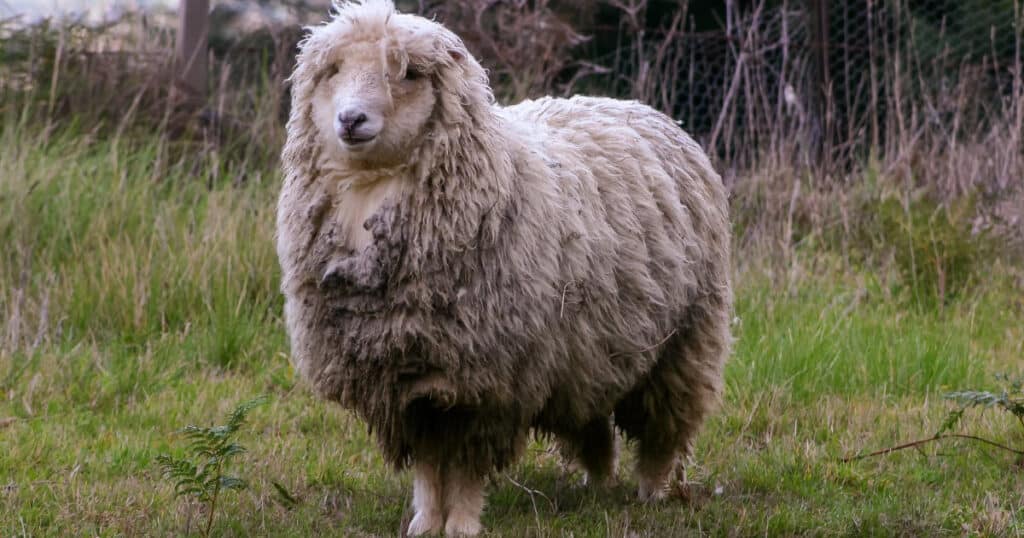There is a lot of variation in how much wool a sheep may produce each year. Sometimes it may be just two pounds annually, while other times it could be as many as 30 pounds! There are several factors that impact how much wool a sheep produces each year, including the breed of the sheep. Other factors include nutrition, genetics, and how much time passes between shearings.
When wool is removed from one an animal, it is kept in a single piece called a fleece. The average weight of a sheep fleece in the United States is more than seven pounds. This often has significant variation between states, and between different breeds of sheep.
Types of Sheep and Wool Production
Among sheep breeds raised for wool production, long wool sheep produce heavier fleeces than their finer wool counterparts. This is because of how coarse long hair sheep wool tends to be, as well as how long it grows.
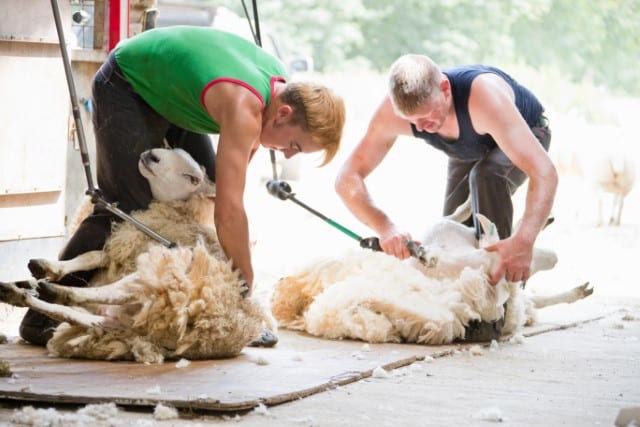
When it comes to medium wool sheep, these animals produce fleeces that command less money than other kinds of sheep wool.
Medium wool sheep are primarily breeds raised for meat production, although their wool is also used. Medium weight sheep fleeces tend to weigh more than other kinds of wool.
Fine wool sheep produce lighter weight fleeces, but their wool is the most valuable of all types. Fine wool is used for clothing, and some kinds of fine wool have extremely high values. Merino wool is one well-known example.
When it comes to wool production, every breed (and every sheep within that breed) is a little different.
In this article, I’ll discuss the average amount of wool produced by different types of sheep per year.
Famous Sheep Breeds for Wool Production
While the vast majority of sheep grow wool and can be sheared, there are only certain kinds of sheep that are considered to grow premium wool quality.
If a farmer wants a wool producing operation, they should raise sheep bred specifically for their wool.
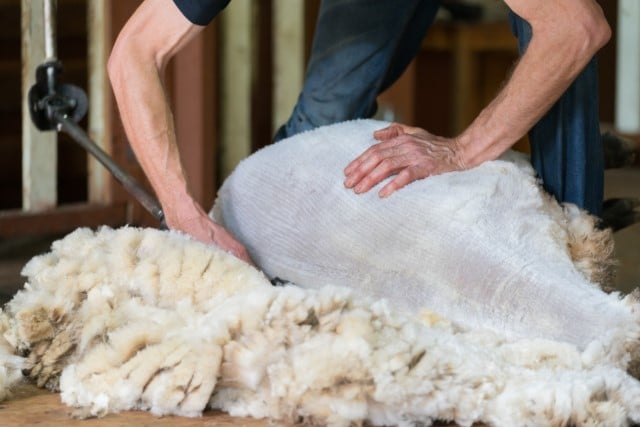
Let’s take a look at some of the most famous wool producing sheep.
Debouillet
The Debouillet sheep breed was created by crossing the Rambouillet with the Delaine-Merino breed. The Debouillet has a staple length that is a bit better than even the Merino, and it surpasses the Rambouillet.
This breed does well in the western United States and the wide variety of weather you can experience there. Debouillet sheep have extraordinarily fine and soft fleeces.
They are quite distinctive in their drape and special crimp.
Merino
Merino sheep have remarkably fine wool, between 17 and 22 microns for each fiber. In some instances, you may find Merino wool fibers as fine as 12 microns.
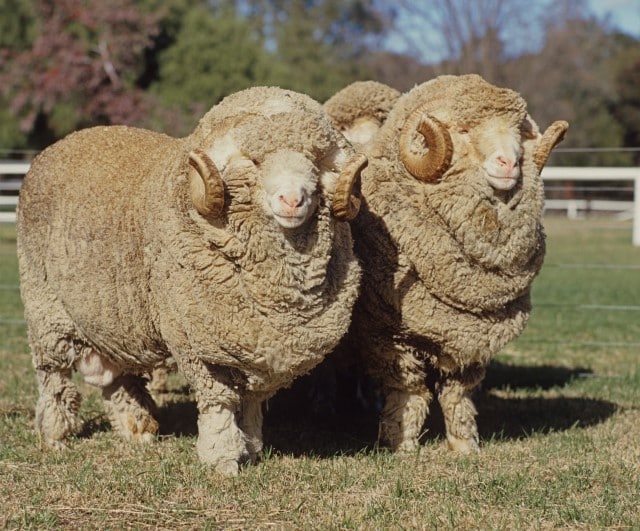
Merino wool is extraordinarily soft, and it is prized in luxury clothing. Merino regulates temperature and moisture.
You will often find Merino wool in high-end athletic and outdoor clothing.
The amount of wool a Merino sheep can produce per year depends on the specific kind of Merino and other factors. It can vary from as low as seven pounds to as much as 40 pounds per year for a ram.
Cormo
If you want to keep your wool flock in colder and wetter circumstances than average, check out the Cormo. This sheep breed was created in Tasmania, and it produces substantial and heavy fleeces.
The color is whiter than many other kinds of wool.
However, there are some disadvantages of Cormo wool. One of these is its relatively short staple length, as well as a higher than average crimp.
This becomes a problem when you try to spin the wool, so it’s a bit more labor intensive.
Bond
The Bond breed was created by mixing the Lincoln and Merino sheep. This sheep produces heavy fleece with remarkable softness
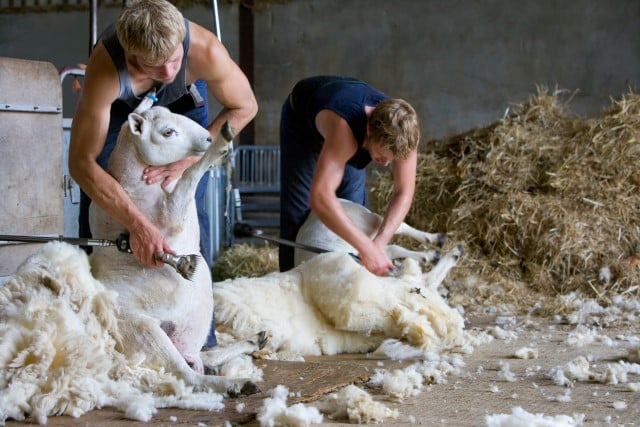
Bond wool fleece fibers usually have a diameter of between 23 and 28 microns. This wool has an extremely long staple (length). We often see this wool used for creating blankets.
Rambouillet
The Rambouillet produces fine wool and has a large body, so it has a large wool yield. Some producers raise this kind of sheep for meat in addition to its wool.
The diameter of Rambouillet fibers ranges from 19 to 23 microns.
This kind of wool has a milder crimp than many other varieties. The type of crimp you see in Rambouillet wool fibers means that it has great elasticity.
Polwarth
The Polwarth descends from the Merino and Lincoln sheep breeds. Producers created this breed so that the Polwarth could be used for a variety of purposes, although it’s most often prized for its wool.
Polwarth is able to deal with moist conditions that Merino sheep cannot thrive in.
Sheep are Raised for Different Purposes
Among the hundreds of breeds available, certain breeds are primarily raised for wool, while others are mainly raised for meat or even milk but the producers may also shear and use their wool.
Sheep Raised for Meat
There are several kinds of sheep that are primarily raised for meat. Some of these include the Suffolk sheep, the Cheviot sheep, the Charollais sheep, the Katahdin sheep, the Tunis, the Blackbelly sheep, the Shropshire breed, and of course the Texel.
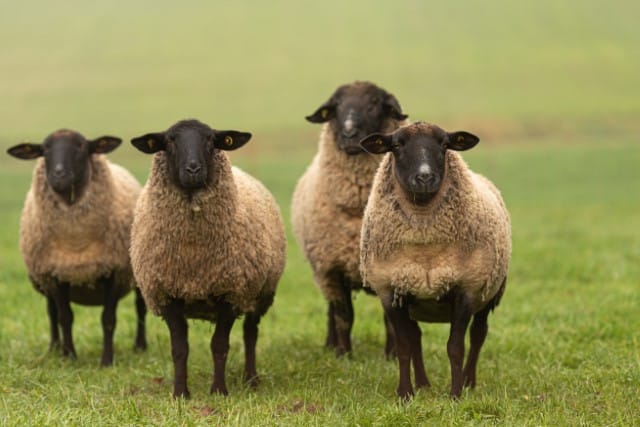
While there are some sheep meat farming operations in the United States, sheep meat is more popular and widely eaten in Europe and other parts of the world.
While some farmers who do this sell wool as a side business, it isn’t their main focus and may even be viewed as a hassle. Some breeders who raise sheep for meat production have switched to raise hair sheep breeds to cut shearing as an annual maintenance project and expense.
While a meat breed might produce a heavy fleece, the quality will be low. However, if your operation focuses on meat production and wool is a side business, you may be able to take all of your wool to a mill to be made into socks or blankets that you could market or offer as gifts during the holidays.
So, How Much Wool Per Sheep is Produced Annually?
Sheep fleeces range between two pounds and 30 pounds, but the average weight of fleeces from sheep on American farms is a bit more than seven pounds.
Now you know that sheep vary a lot when it comes to how much wool they produce each year. A major factor is the breed of sheep, but other factors include nutrition, genetics, region, and how much time you wait between shearings.

